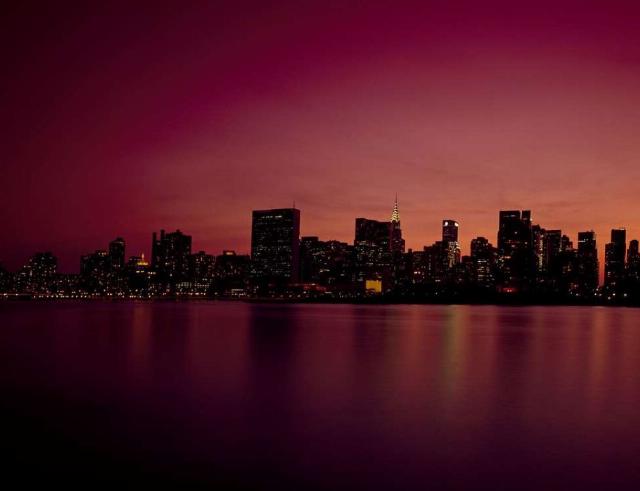

Photo Credit: Image via Picryl.
Picryl
It's understandable to want to live in a big city, but there are drawbacks.For a while now I’ve been seeing articles in the news and in my social media accounts about people fleeing some of America’s cities and states for greener pastures. If I had my way, I’d be living in a cabin in Montana, so I have a great deal of sympathy for people moving out of crowded urban areas. However a great many of those people simply change one large city for another. They may move out of L.A. or Portland and settle in Nashville or Miami.
Large cities have a great deal to offer. They can provide more opportunities for employment, housing, entertainment, and education and greater availability of services, such as doctors and shopping, along with better infrastructure in terms of power, water, and internet and more access to public transportation, more cultural diversity, and chances of meeting new people as well as a faster pace of life.
There are a few reasons for this. Large cities are usually where the highest-paying jobs are. Positions that require advanced degrees in fields such as medicine, law, and finance are more often found in larger cities.
But there are always trade-offs. Living in the country brings peace and quiet, fresh air, and little to no traffic, but getting to the grocery store or the doctor’s office can involve some travel. On the other hand, living in a medium to large city comes with all the benefits mentioned above, but the trade-offs can be equally frustrating and potentially dangerous.
In reading through the stories of problems in America’s larger cities, one notices commonalities. When cities make the news for all the wrong reasons, those covering them often mention their leaders. The 25 largest cities in America all have Democrat mayors, and as of 2023, over 85% of the largest American cities are mostly populated by and led by Democrats. That stands to reason. The colleges and universities that are turning out people with advanced degrees have faculties that are overwhelmingly left-of-center. The high schools, middle schools, and elementary schools likewise have faculties that lean left. One report compared the “intolerant moral absolutism found among university students to that of religious and political conservatives” and alleged that “this lends prima facie support to recent claims that the moral relativism of years past is transforming into a form of liberal moral puritanism.”
The last large city with a Republican mayor that I remember reading about was NYC and Rudy Giuliani. He did a great job of bringing that city back together after 9/11 as well as restoring law and order, in part through his “broken windows” policy of law enforcement. This approach is based on the view that people who commit small infractions, such as graffiti and turnstile-jumping, may eventually graduate to larger crimes such as burglary and assault.
Searching for the “10 most dangerous cities in America” and “American cities with lowest quality of life” and “America’s largest cities” produces lists containing different cities, but the same ones appear often enough to produce a pattern. Crime rates are usually calculated per 1,000 people and distinguish between violent crime and property crime. Data are available through federal, state, and local law enforcement agencies; the FBI’s Uniform Crime Reporting Program; or online services such as Neighborhood Scout. Interestingly, some cities make the list of the “10 Most Dangerous American Cities” because of property crimes like burglary rather than violent crimes such as assault. The violent crime rate of cities on this list range from a low of 10 crimes per 1,000 people (Philadelphia) to 23–25 per 1,000 (Memphis and Detroit). The range of property crime rates in the cities on the list is much higher, ranging from 30–35 per 1,000 people (Fort Lauderdale) to 70–75 per 1,000, (Memphis and Detroit again). These rates will change, of course, due to factors such as specific strategies instituted by local law enforcement agencies and economic conditions. Rates also vary by neighborhoods within cities and over time within those neighborhoods.
In the wake of the George Floyd riots, some cities that appear on the “America’s most dangerous” list have experimented with defunding their police departments to various degrees. An interesting approach to reducing the crime rate is to stop reporting crimes to the FBI altogether, or to change felonies to misdemeanors. California has famously declared that any retail theft under $950 is classed as a misdemeanor. This has resulted in countless videos of people calmly walking out of stores with armfuls of merchandise. As a result, that state is seeing vast numbers of retail store closures. Some residential areas have become “food deserts” such that the locals must travel ever farther distances to purchase groceries. The rising tide of commercial office closures in downtown San Francisco, combined with increasing rates of homelessness, open drug use, and crime, is resulting in noticeable neglect in that area.
Defunding and denigrating law enforcement has had another predictable consequence. Along with escalating crime rates, closures of retail stores, and commercial offices, now police departments are facing a hiring crisis. Some cities are responding by offering enhanced signing bonuses or lowering their minimum age requirement to 18. Some are even offering positions to non-citizens or lowering their minimum standards for education and physical fitness.
I guess shoplifters would be relieved to know that the obese police officer chasing them down the sidewalk in some Big Blue City isn’t an American citizen, speaks English only as a second language, and can barely do a single push-up. However, he might not have that consolation if he tried that in a small town.
<img alt="
Image via <a data-cke-saved-href=" captext="
Image via Picryl.





